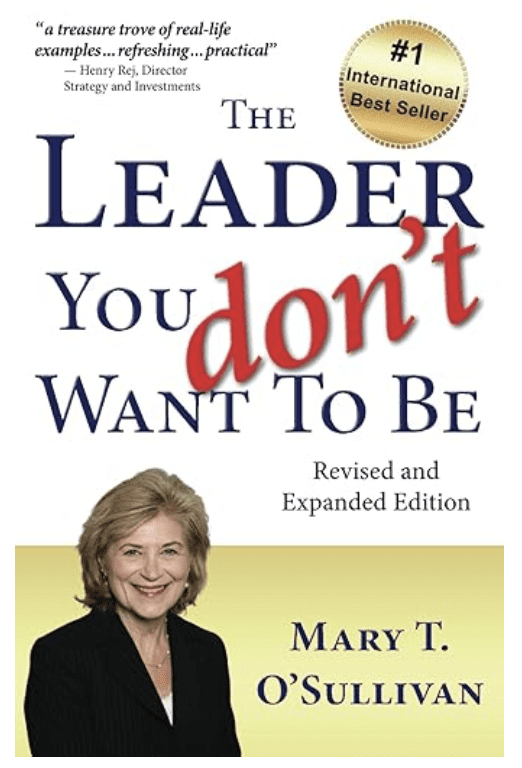Search Posts
Recent Posts
- Rhode Island Weather for May 30, 2025 – Jack Donnelly May 30, 2025
- Outdoors in RI: Tick Guy, PFA well tests, Washing boats of Invasive Plants, Vets surf, Coastal study May 30, 2025
- Long-term behavioral unit at Our Lady of Fatima could free up short-term, acute care at RI hospitals May 30, 2025
- Now we know. Rhode Island IS identified as a Sanctuary State, particularly Prov. & CF. May 30, 2025
- GriefSPEAK: Time – Mari Nardolillo Dias May 30, 2025
Categories
Subscribe!
Thanks for subscribing! Please check your email for further instructions.

What to expect from leadership in 2025 – Mary T. O’Sullivan
By Mary T. O’Sullivan, MSOL, contributing writer on business and leadership
“The rapid acceleration of change in the workplace — from the boom of generative AI to shifting work models — means leaving behind old ideas of what …leadership looks like.â€
Since the pandemic, so much about work has changed. In many cases, leadership has failed to keep up. Now businesses are looking toward success models that did not exist in the past. Some changes are a matter of employee accommodation, others, forced by technology advances, compel leaders to embrace change or be left behind.
While carping about how much it may cost, leaders can no longer ignore the impact of generative artificial intelligence (AI). With competitors and suppliers relying more heavily on AI technology, business leaders now need to be able to answer the questions “What can AI do to make us more efficient?†What are its capabilities and limitations? How do we stay ethical and what will be the impact on training and upskilling so that employees can effectively embrace and utilize its capabilities?â€
According to Business Insider, their 2024 workforce roundtable concluded that there is a new role for learning and sharing knowledge: apprenticeships; apprenticeships are now regarded as a two-way street. “An old version of apprenticeship is learning the craft step-by-step — like the “Karate Kid” and Mr. Miyagi, based on wisdom and time. Now leaders are also seeing from younger generations how to embrace technology and AI, specifically, how to lead inclusive teams that maybe don’t look so much like you, and how to support employees through mental-health challenges and general wellness.â€
And use of AI cuts down on layers of communication in management by streamlining what the executive wants and what he or she gets. Kenon Chen, executive vice president of strategy and growth, at Clear Capital observed “What gen AI is leading us to is a world in which we don’t need so many translators because there are fewer hops from the idea to the value that we want to create to the execution. When you have all these translators, it’s like the telephone game.â€
Since 2020 and the advent of “loneliness†as a national health issue, employee well-being and mental health can no longer be swept under the table. Work-life balance and job satisfaction contribute to productivity, reduce turnover, and help to retain talent. Organizations now realize that, especially with a global workforce, inclusiveness and employee well-being are more important than ever. “…there’s a question coming up more often about whether or not people feel too disconnected from their colleagues, so we’re trying to understand a more holistic view of worker well-being.†Shane Koller, senior vice president and chief people officer, Ancestry tells Business Insider.
The intersection of employee well-being, implementing AI, and transforming the C-Suite needs to be deliberate and well thought out. There may be innumerable AI pilots running throughout and organization, but the question of integrating these disparate systems into one structure everyone understands and uses tests the commitment of the C-Suite to employee engagement and well-being.
“The key to unlocking the potential of AI is to make sure that our employees are embracing it and are excited about the value these new technologies can have on their well-being and the quality of their work. We’re making a lot of different resources available for employees, whether they’re on demand or self-paced, depending on where they are in their AI journey and the type of work that they do.†Lucrecia Borgonovo, chief talent and organizational-effectiveness officer, Mastercard, commented to the Business Insider CEO panel on AI and Worker Well Being.
These executives discussed topics they’re most concerned with in 2025. Worker well-being and AI were the most commonly cited trends, and the overlap was clear. AI will present challenges to worker satisfaction in the coming years, and top management has got to be clear on how to put it to good use while maintaining employee engagement, satisfaction and well-being. Whether working with AI or not, people have to maintain their sense of value and worthiness. The C-Suite transformation will be a bigger challenge than simply introducing AI into the work products. CEOs need to learn how to make changes that will not rock the boat.
“At the inflection point is the enormous job companies have to not only encourage AI adoption but also equip employees with what they need to take part in the transformation that is underway.†– Businsess Insider
___


Mary T. O’Sullivan, Master of Science, Organizational Leadership, International Coaching Federation Professional Certified Coach, Society of Human Resource Management, “Senior Certified Professional. Graduate Certificate in Executive and Professional Career Coaching, University of Texas at Dallas.
Member, Beta Gamma Sigma, the International Honor Society. Advanced Studies in Education from Montclair University, SUNY Oswego and Syracuse University. Mary is also a certified Six Sigma Specialist, Contract Specialist, IPT Leader and holds a Certificate in Essentials of Human Resource Management from SHRM.contributing writer, business leadership.
